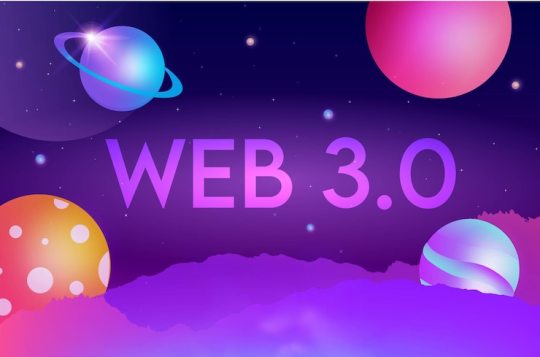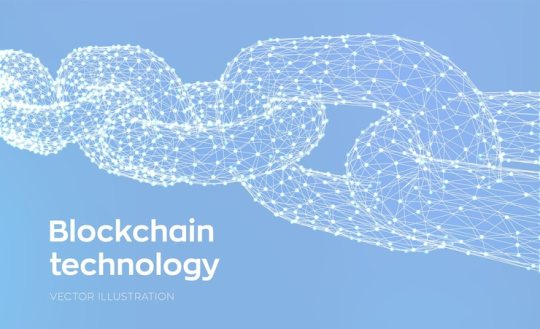Link
If you are interested in investing money. Learn how to invest in web 3.0, which is future of world.
0 notes
Text
#web 3#web 3 browser#web 3.0#web 3 gaming#web 3 development company#web 3 explained#web 3.0 blockchain#blogger#bitcoin#ethereum web 3.0#crypto#cryptocurrencies#bitcoin latest news#tech#technology
0 notes
Text
What exactly is Web 3.0 (Web3)?
Web 3.0 (Web3) is the third generation of web technology evolution. The web, also known as the World Wide Web, is the foundational layer that provides website and application services on the internet.

Because Web 3.0 is still evolving and being defined, there is no canonical, universally accepted definition. But one thing is certain: Web 3.0 will place a strong emphasis on decentralized applications and will make extensive use of blockchain-based technologies. Machine learning and artificial intelligence (AI) will also be used in Web 3.0 to help empower more intelligent and adaptive applications.
The concept of a semantic web is another component of the emerging definition of Web 3.0. Tim Berners-Lee, the creator of the web, is among those who have advocated for the incorporation of semantic technology into the web.
It took more than ten years to transition from Web 1.0 to Web 2.0, and it is expected to take just as long, if not longer, to fully implement and reshape the web with Web 3.0.
If the trend of change is traced from Web 1.0, a static information provider where people read websites but rarely interacted with them, to Web 2.0, an interactive and social web enabling user collaboration, then Web 3.0 will change both how websites are created and how people interact with them.
How does Web 3.0 function?
Hypertext Markup Language (HTML) defines the layout and delivery of webpages in Web 1.0 and Web 2.0 technologies. HTML will remain a foundational layer in Web 3.0, but how it connects to data sources and where those data sources reside may differ from previous generations of the web.
Many Web 2.0 websites and nearly all applications rely on some form of centralised database to deliver data and enable functionality. Instead of a centralised database, Web 3.0 applications and services use a decentralised blockchain. The basic idea behind blockchain is that there is no arbitrary central authority, but rather a form of distributed consensus.
The concept of a decentralised autonomous organisation is an emerging governance ideal within the blockchain and Web 3.0 communities (DAO). Instead of a centralised authority governing platform operations, a DAO, Web 3.0 technologies, and communities provide a form of self-governance in an attempted decentralised approach.
Web 3.0 is fundamentally more compatible with cryptocurrency than with fiat currency. The use of cryptocurrencies, which are all built and enabled on top of blockchain technology, enables finance and the ability to pay for goods and services with a decentralised form of payment across Web 3.0.
Both Web 1.0 and Web 2.0 were built primarily with the IPv4 addressing space in mind. As a result of the web's massive growth over the decades, there is a need for more internet addresses in Web 3.0, which IPv6 provides.
Key features of Web 3.0
AI, semantic web, and ubiquitous properties may all be considered when designing Web 3.0. The goal of using AI is to provide end users with faster and more relevant data. A website that uses AI should be able to filter through and provide data that it believes a specific user will find useful. Because the results are websites that have been voted on by users, social bookmarking as a search engine can provide better results than Google. These outcomes, however, can be manipulated by humans. AI could be used to distinguish between legitimate and falsified results, producing results similar to social bookmarking and social media but without the negative feedback.
An artificially intelligent web will also include virtual assistants, which are already available as features built into devices or through third-party apps.
The semantic web concept is to categorize and store information in a way that teaches a system what specific data means. In other words, a website should be able to understand words entered into search queries in the same way that a human would, allowing it to create and share more relevant content. This system will also make use of AI; the semantic web will teach a computer what the data means, and AI will then use the information.
Several key Web 3.0 features, including the following, help to define what the third generation of the web will likely be all about:
Decentralized
Web 3.0 will be decentralized, as opposed to the first two generations of the web, where governance and applications were largely centralized. Applications and services will be enabled in a distributed manner, with no centralized authority.

Blockchain-based
Blockchain enables the development of decentralized applications and services. Data and connections between services are distributed differently with blockchain than with centralized database infrastructure. In a decentralized world, blockchain can also enable an immutable ledger of transactions and activity, assisting in providing verifiable authenticity.

Cryptocurrency-enabled
The use of cryptocurrency is a key feature of Web 3.0 services, and it has largely replaced the use of fiat currency.

Self-sufficient and artificially intelligent. More automation in general is a key feature of Web 3.0, and this automation will be largely powered by AI.
Read more https://kaysalim.blogspot.com/
#what exactly is web3#what is web 3.0#what is web 3.0 crypto#what is web 3.0 and metaverse#what is web3#how does web 3.0 work#web 3.0 vs web 2.0#ethereum web 3.0#web 3.0 projects#web 3.0 examples#web 3.0 metaverse#web 3.0 explained#web 1.0 vs web 2.0 vs web 3.0#web 3.0 explainer#web 3.0 app#web 3.0 simplified#web 3.0 definition#web 3.0 blockchain#web 3.0 development#web 3.0#web 3.0 crypto#web 3.0 for beginners#web 3.0 and blockchain
3 notes
·
View notes